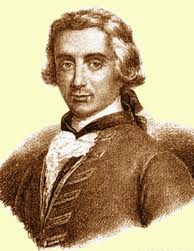Vicente Bacallar facts for kids
Quick facts for kids
The Most Excellent
Vicente Bacallar
|
|
|---|---|
 |
|
| Born |
Vicente Bacallar y Sanna
6 February 1669 |
| Died | 11 June 1726 (aged 57) |
| Seat N of the Real Academia Española | |
| In office 19 July 1713 – 11 June 1726 |
|
| Preceded by | Seat established |
| Succeeded by | Francisco Antonio Zapata |
Vicente Bacallar y Sanna was an important person from Sardinia. He was born on February 6, 1669, in Cagliari, Sardinia. He passed away on June 11, 1726, in The Hague, Netherlands. Vicente was a nobleman, a military officer, a historian, and a diplomat for the Spanish Empire. He came from a noble family in Sardinia when the island was part of Spain. He was also known as Vincenzo Bacallar Sanna.
Contents
Early Life and Military Career
Vicente Bacallar y Sanna came from a noble family in Valencia. When he was young, he likely moved to Spain. There, he received excellent training in military and political matters.
Charles II of Spain appointed him to important roles. He became the governor of Cagliari and Gallura. He was also the military governor of Sardinia.
Loyalty During War
During the War of the Spanish Succession, Sardinia's noble families were divided. Some supported Philip of Anjou, while others supported Charles of Habsburg. Bacallar remained loyal to Philip of Anjou. Philip became King Philip V of Spain.
Because of his strong loyalty, King Philip V rewarded him. In 1709, Vicente Bacallar was given the title of Marquess of San Felipe. He also became the Viscount of Fuentehermosa.
Sardinia and Diplomacy
When Sardinia surrendered to Archduke Charles, Bacallar had to flee to Spain. However, he still hoped to help Spain get Sardinia back. He was part of the Spanish team at the Treaty of Utrecht in 1714. This treaty decided that Sardinia would become part of the Austrian crown.
After this, he became an ambassador to the Republic of Genoa. From there, he supported a plan to get Sardinia back for Spain. Sardinia was briefly taken back in 1717. But it had to be given up again in 1720. The island then went to the Dukes of Savoy.
Intellectual Work and Writings
While working as a diplomat, Vicente Bacallar was also very active intellectually. In 1713, he helped create the Real Academia Española. This is a very important institution for the Spanish language. He held a special seat, "N," in the Academy.
He also helped create the Academy's first dictionary. This dictionary was published in 1726. Bacallar wrote several books and poems. These included the poem Las Tobias (1709) and El Palacio de Momo (1714). He also wrote Monarchia Hebrea (1719).
He wrote historical books too. One was called Description geographique, historique et politique du royaume de Sardaigne. This book described the geography, history, and politics of the Kingdom of Sardinia.
History of the Spanish War
His most famous historical work was about the War of the Spanish Succession. It was titled Commentarios de la guerra de España y historia de su Rey Phelipe V el Animoso desde el principio de su regnado hasta la paz general del año 1725. This means "Commentaries on the War of Spain and History of its King Philip V the Brave."
King Philip V asked him to write this book. Bacallar wanted to be fair and objective about the events. He showed respect for both sides involved in the war. However, the powerful people at the time did not like the book. The first edition, published in Genoa, was removed from stores.
Later Life and Death
In 1724, Vicente Bacallar became the ambassador to the Netherlands. His goal was to convince the Netherlands to stay neutral in conflicts. He died two years later in the Netherlands. He passed away due to a stroke.
He left behind a very large library. It contained sixteen thousand books.
See also
 In Spanish: Vicente Bacallar para niños
In Spanish: Vicente Bacallar para niños

